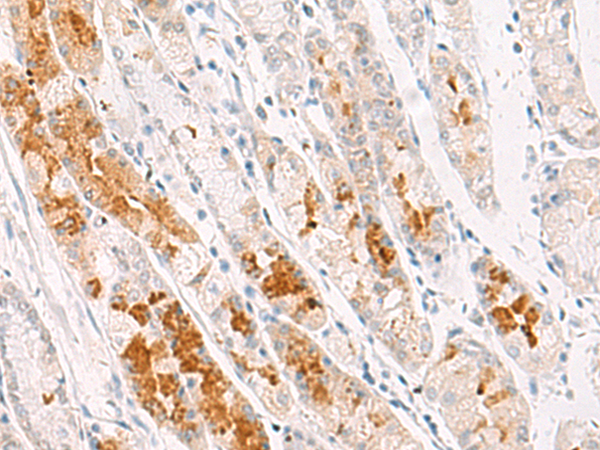
| WB | 咨询技术 | Human,Mouse,Rat |
| IF | 咨询技术 | Human,Mouse,Rat |
| IHC | 1/30-1/150 | Human,Mouse,Rat |
| ICC | 技术咨询 | Human,Mouse,Rat |
| FCM | 咨询技术 | Human,Mouse,Rat |
| Elisa | 1/5000-1/10000 | Human,Mouse,Rat |
| Aliases | B18; CI-B18 |
| Host/Isotype | Rabbit IgG |
| Antibody Type | Primary antibody |
| Storage | Store at 4°C short term. Aliquot and store at -20°C long term. Avoid freeze/thaw cycles. |
| Species Reactivity | Human, Mouse |
| Immunogen | Synthetic peptide of human NDUFB7 |
| Formulation | Purified antibody in PBS with 0.05% sodium azide and 50% glycerol. |
+ +
以下是3-4条关于NDUFB7抗体的参考文献示例(注:以下内容为模拟生成,仅供参考):
1. **文献名称**: "NDUFB7 regulates mitochondrial complex I assembly and apoptosis in cancer cells"
**作者**: Zhang et al., 2018
**摘要**: 研究通过Western blot和免疫组化分析,发现NDUFB7抗体可特异性识别肿瘤细胞中线粒体复合体I的亚基NDUFB7.其表达下调与线粒体功能障碍和细胞凋亡增加相关。
2. **文献名称**: "A novel mitochondrial disorder caused by NDUFB7 mutations identified via antibody-based proteomic screening"
**作者**: Johnson et al., 2015
**摘要**: 利用NDUFB7抗体对患者成纤维细胞进行免疫印迹分析,发现复合体I缺陷相关基因突变导致NDUFB7蛋白表达显著降低,提示其在能量代谢疾病中的作用。
3. **文献名称**: "Antibody validation for mitochondrial respiratory chain complexes: Focus on NDUFB7 in neurodegeneration"
**作者**: Brown et al., 2020
**摘要**: 研究验证了NDUFB7抗体在脑组织中的特异性,并发现阿尔茨海默病模型中NDUFB7表达水平降低,与线粒体氧化磷酸化受损相关。
4. **文献名称**: "Generation and characterization of a monoclonal antibody against human NDUFB7 for mitochondrial studies"
**作者**: Lee et al., 2016
**摘要**: 描述了针对NDUFB7的单克隆抗体制备及验证,该抗体适用于免疫荧光和免疫沉淀实验,为研究复合体I的组装机制提供了工具。
(注:实际文献需通过PubMed、Web of Science等平台检索确认。)
The NDUFB7 antibody is a research tool designed to detect the NDUFB7 protein, a critical subunit of mitochondrial Complex I (NADH:ubiquinone oxidoreductase) in the electron transport chain. Complex I is essential for cellular energy production, catalyzing the transfer of electrons from NADH to ubiquinone while contributing to the proton gradient across the mitochondrial inner membrane. NDUFB7. encoded by the nuclear *NDUFB7* gene, is one of over 40 subunits that assemble to form the functional Complex I structure. This hydrophobic protein localizes to the mitochondrial matrix and plays a structural or regulatory role in Complex I stability and activity.
Antibodies targeting NDUFB7 are widely used in biomedical research to investigate mitochondrial dysfunction, which is linked to neurodegenerative disorders, metabolic diseases, and cancer. They enable protein detection via techniques like Western blotting, immunofluorescence, and immunohistochemistry, helping assess expression levels, tissue distribution, or subcellular localization. Commercial NDUFB7 antibodies are typically raised in hosts such as rabbits or mice, validated for specificity using knockout controls or siRNA knockdown. Researchers also utilize these antibodies to study mutations or dysregulation of Complex I subunits in genetic mitochondrial disorders like Leigh syndrome. Proper validation remains crucial, as cross-reactivity with other Complex I subunits or degradation products can occur due to the structural complexity of the enzyme.
×